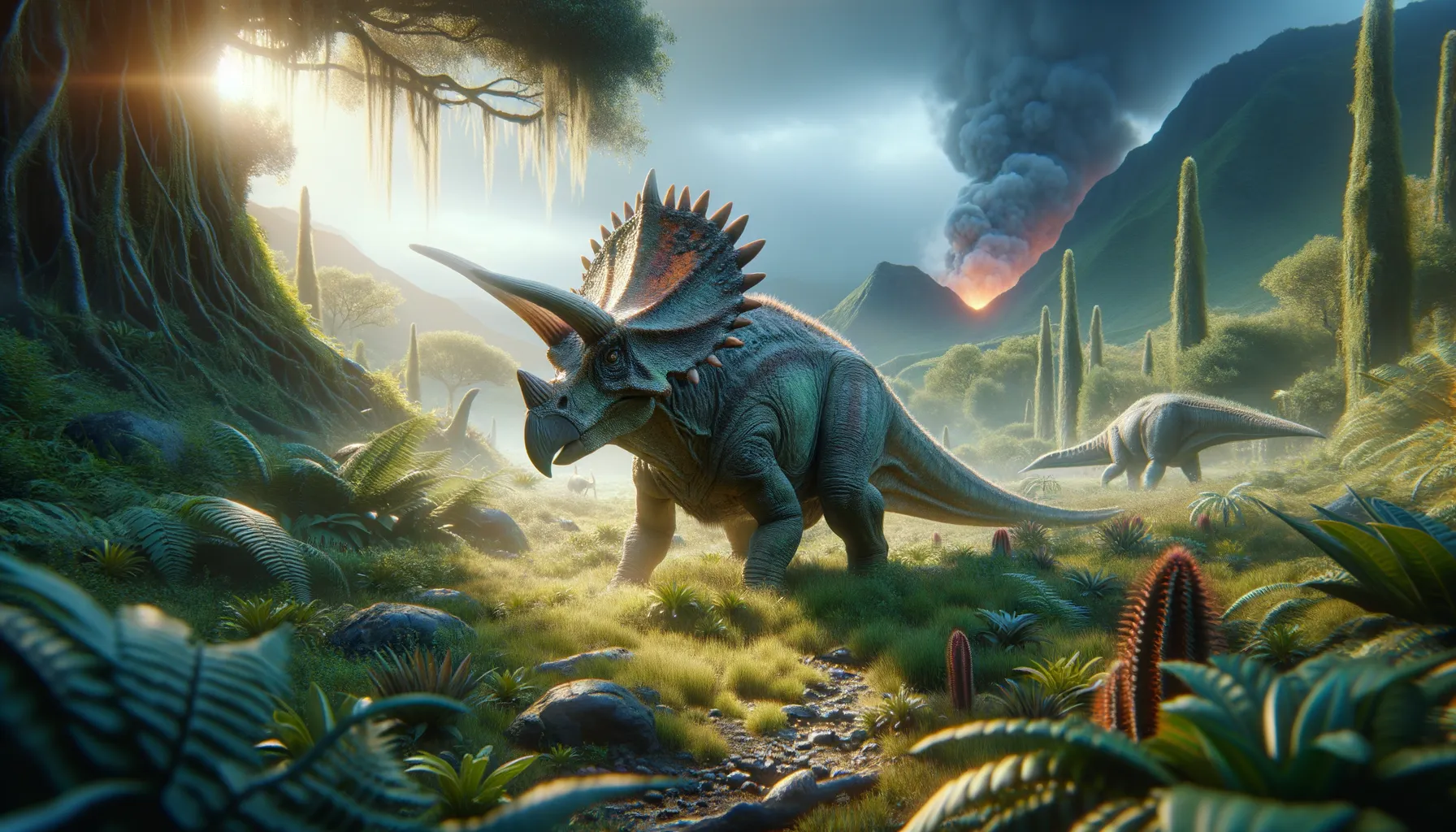
Zuniceratops
Small horns, big story in dinosaur evolution.
Period
Cretaceous
Length
About 3 meters (10 feet).
Height
Around 1 meter (3.3 feet) at the shoulder.
Weight
Approximately 150 kilograms (330 pounds).
Zuniceratops was a small, early ceratopsian dinosaur discovered in North America. It existed during the Late Cretaceous period and is notable for its distinctive frill and horns, which were more developed in adults. This herbivorous dinosaur lived in regions that are now part of the southwestern United States. Despite its relatively small size, Zuniceratops shows fascinating characteristics that hint at the evolutionary transition between early ceratopsians and later, more advanced species.
Diet
Zuniceratops was an herbivore, feeding on low-growing vegetation. It likely had a diet consisting of ferns, cycads, and other Cretaceous plants. Its beak, unlike that of many later ceratopsians, was likely adapted to a range of plant material.
Hunting
Being an herbivore, Zuniceratops did not hunt other animals for food. Instead, it foraged for plants and maintained a herbivorous lifestyle. Its hunting behavior was essentially the search for plant material in its environment.
Environmental challenges
Zuniceratops faced environmental challenges such as predation from larger theropods, which were common in its habitat. Climate changes during the Late Cretaceous would have also affected its food supply. Dealing with seasonal changes in vegetation likely required adaptability in its foraging habits. Additionally, surviving in a dynamic ecosystem, it had to navigate interactions with numerous other dinosaurs and plant species.
Speed
Relatively slow due to its stocky build.
Lifespan
Estimated to have lived around 10-20 years.
First discovery
Discovered in New Mexico in 1996.
Fun Facts
- Zuniceratops is one of the smaller members of the ceratopsian group, growing only about the size of a buffalo.
- It lived approximately 90 million years ago during the Late Cretaceous period.
- Fossils of Zuniceratops have been found in New Mexico, making it one of the earliest known ceratopsians in North America.
- The name 'Zuniceratops' means 'Zuni-horned face', named after the Zuni people native to the area where it was discovered.
- Unlike some of its famous relatives, Zuniceratops had a pair of brow horns but didn't have the well-known large nose horn.
- Zuniceratops weighed around 175 to 200 kilograms, which is relatively light compared to later ceratopsians.
- Its discovery has helped scientists understand more about the evolution of horned dinosaurs before the arrival of well-known species like Triceratops.
Growth and Development
Like many dinosaurs, Zuniceratops likely underwent rapid growth during its juvenile years. This growth would include the development of its distinctive horns and frill, which became more pronounced and robust with age. As it matured, its protective features served to deter predators and play a role in social interactions.
Habitat
Zuniceratops inhabited forested areas with abundant plant life, providing ample food resources. The landscape of its time would have included rivers and floodplains, supporting a rich ecosystem. Its habitat required adaptation to both wet and dry conditions, common in the fluctuating Cretaceous period climate.
Interaction with other species
Zuniceratops shared its environment with a variety of species, both herbivorous and carnivorous. Interactions with contemporaries likely included competition for plant resources, as well as predator-prey dynamics. Socially, Zuniceratops may have interacted with other ceratopsians for territory or mating purposes.
Natural lifespan
Zuniceratops likely lived for around 10 to 20 years.
Reproduction
Zuniceratops is believed to have laid eggs, like other dinosaurs. Parental care might have been limited, with young dinosaurs quickly becoming independent. Nesting sites would have been strategically chosen to ensure safety from predators and environmental elements.
Social behaviour
Little is known about its social behavior, but Zuniceratops may have traveled in small groups for protection. This social structure could have helped in spotting predators and defending themselves collectively. Ceremonial display of frills and horns likely played a role in mating rituals.
Fossil locations
The first fossils of Zuniceratops were discovered in New Mexico. Its fossils are primarily found in North America, indicating its habitation within that region. Further excavations in the American Southwest have continued to uncover specimens, shedding light on its life and environment.
